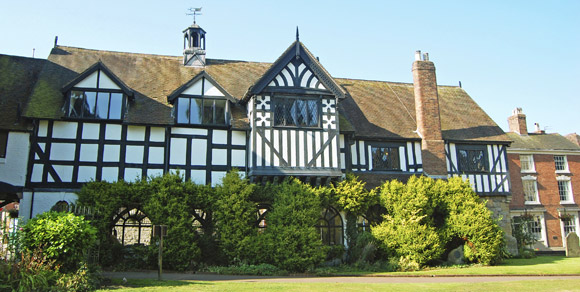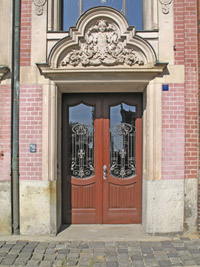Listed Building Consent
13/05/2015 00:00:00by Doug Kelley13/05/2015 00:00:00Listed Building ConsentBluedrop Services

Check what alterations or repairs may need consent or you could be up for prosecution

In order to carry out any development or refurbishment on a listed building you will need to gain Listed Building Consent (LBC) from the local planning authority or council. This is very different and much more detailed than standard planning permission and acceptance can be granted, however it will depend on the type of work that you intend to carry out. According to the English Heritage, up to 90% of applications actually do get approval – however, things such as double glazing requests are highly likely to be shot down. Any work to alter, demolish or replace part of a listed building may affect its character as a building of architectural or historical interest and therefore listed buildings are protected in this way.
It is actually considered a criminal offence to carry out any works on a listed building where listed building consent is required and not sought. Illegal alterations can result in prosecution and potentially result in a substantial fine, imprisonment or both! Not to mention a bill for thousands of pounds to restore the property to its original state... Lack of consent for any illegal works does not carry an expiry date either, so it is important that you thoroughly check for listed building consent on any alterations prior to buying a listed home. Similarly a defence to prove that permission would have been granted if sought is also not sufficient in your protection.
What alterations need listed building consent?
In most situations any work on kitchen units, bathroom fittings or general décor can be altered without need for listed building consent, so long as these items do not form part of the historic lure. However, other minor alterations such as replacing an internal door or adding satellite dishes, flues and even alarms may need consent as these may alter the traditional feel of the listed building.
In general any repairs, so long as they are carried out like-for-like however will not need listed building consent. But it will always depend on the building itself and consideration will be taken to what actually provides its character and special interest. Perhaps even changing a paint colour or cleaning a wall in some cases may require approval, or altering just the layout of a building which may give clues to the type and period of the building are protected.
As it is such a grey area, it is worth checking with the relevant statutory heritage body, such as English Heritage, and gaining their support and advice. But don’t assume the garden is not included in the items that will need approval, often external walls or trees will also form part of the overall historic interest.
What should you do prior to seeking listed building consent?
 It takes between eight to thirteen weeks to reach a decision, and before making an application you should always contact your insurance broker to find out how works may affect your listed building insurance.
It takes between eight to thirteen weeks to reach a decision, and before making an application you should always contact your insurance broker to find out how works may affect your listed building insurance.Listed buildings insurance can be a complicated area but a specialist provider will be able to talk you through exactly what is required and what areas will require changes due to alterations in the property. Likewise, speaking to your local conservation officer will help you to gain a good understanding on whether you will need listed building consent and what types of development works are more likely to be approved before moving forward to the planning phase and undertaking unnecessary expense.
Once you have reached this stage, along with your application for listed building consent, you will have needed to approach a chartered surveyor or architect to provide detailed drawings of your plans.
There should be two sets of such drawings showing the structure before work and the altered structure or new development to replace it after the proposed work, in addition to including any elevations and photos of specific areas of change. Of course, in order to make approval more likely it is recommended that you approach an architect with previous experience working with listed buildings. In many cases your neighbours will be a fountain of knowledge and know exactly what is likely or unlikely to be approved following their own experience as well as having a feel for any potential barriers within the local authority or surrounding residents.
Return to blog menuWant to know more about Bluedrop's Listed Building Insurance?
Call our friendly team now for the right insurance cover - at the best price
+441489780491
Calls recorded for training and quality.



 Privacy and Cookie Policy
Privacy and Cookie Policy